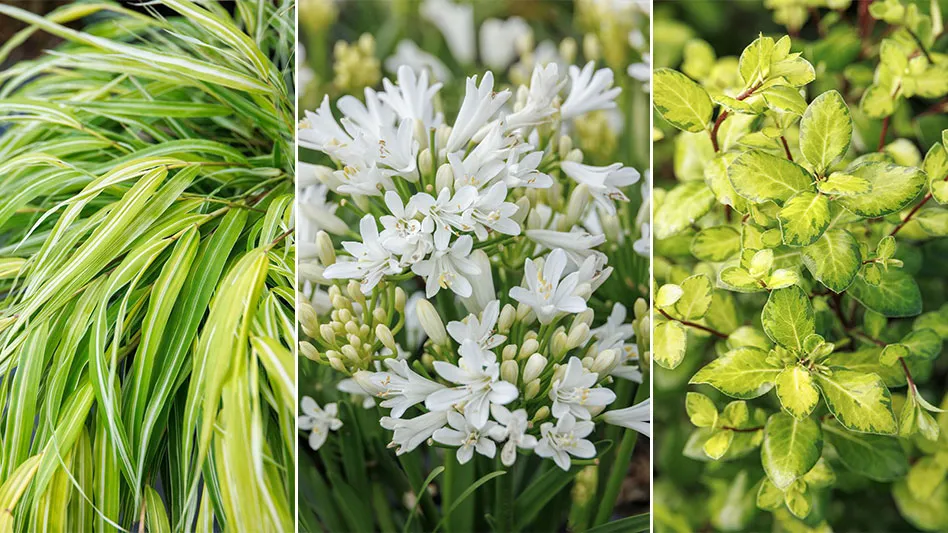.jpg) Scott W. LudwigA severe scale infestation can be difficult to manage on trees and shrubs in a nursery. In most parts of the country, scales are not actively developing during the winter. As a result, this is a great time to identify hot spots and implement a management plan.
Scott W. LudwigA severe scale infestation can be difficult to manage on trees and shrubs in a nursery. In most parts of the country, scales are not actively developing during the winter. As a result, this is a great time to identify hot spots and implement a management plan.
To effectively manage scales, it is important to properly identify them. It’s equally important to understand the control methods that are most effective against the species you are battling, and understand their lifecycle to effectively use insecticides.
Scales often are not detected until their populations are causing damage to the plant or are easily seen due to their high population. It is always best to treat any insect when their population is low. Even if you are able to control a high scale infestation, the scales often stay on the plant and are unsightly. I often recommend tossing plants that are heavily infested. This can save you a lot of time and effort in trying to clean up a problem that may result in the scale spreading to other plants.
 Get to scale infestations early
Get to scale infestations early
Many scale problems start at the beginning of a crop cycle. If you purchase cuttings, inspect them before you plant them. If you are taking your own cuttings, make sure your stock plants are clean. If you do have scales on your cuttings, control the scales at this stage. You will use less insecticide trying to manage the scales on small plants. Depending on your rooting technique, it may be difficult to effectively use foliar sprays. If drenching is an option, wait until the plants have a good root system. Plants with underdeveloped root systems may not take up enough insecticide to control the pest.
Once the plants are potted, control often becomes difficult due to the close spacing of the pots. Getting insecticide to the scales on closely-spaced pots is often difficult if not impossible.
Dead or alive?
Since scales often do not fall off the plant when they die, it can be difficult to determine if the scales are dead or alive. There are a couple of techniques you can use to determine the effectiveness of your treatments. Using a hand lens is an easy way to determine mortality. Simply flip the scale over and look at it. If it is plum it is probably alive. If it is shriveled or dehydrated then it is dead. There is also the possibility that the female may be dead but there are lots of eggs under her body. Flipping big scales, like soft scales, is easy. You can wipe your finger over smaller scales and if they flake off easily and your finger is clean they are probably dead. Live scales tend to leave a yellow or reddish stain on your finger.
Life cycles and mobility
The life cycle of scale insects vary considerably among species. Their life span may last from a few weeks to several months. They can also have one to several overlapping generations per year. Females can give birth to live young or lay eggs.
The mobile stage of all scale species is the first developmental stage. This mobile stage is called the crawler stage. This is the stage at which scale insects can most effectively be controlled since they do not have a protective covering on their body. An easy method for monitoring the crawler stage is to take a piece of double sided tape and place it on a twig near where scale are present. As the crawlers hatch and move about, they will get stuck on the tape. You simply have to monitor the tape to know when crawlers are active. Another method you can use is to gently tap a scale-infested stem or leaf over a sheet of white paper. If scale crawlers are present, they will fall onto the paper, where you can easily see them. Most insecticides registered for scales will be active against this stage.
Once the crawlers settle, scale insects enter the motionless development period. Some species of scale, such as armored scale, never move again. Other scales may move at various stages of their life cycle. Many soft scales may move between the leaves and the stem of the plant.
Feeding
All scale insects feed by inserting their hair-like mouthparts into plant tissue. Different families of scales feed on different plant cells. Armored scales feed on individual plants cells and can cause plant death. Since they are feeding on plant cells, many of the systemic insecticides are not effective.
Many scales are phloem feeders. While feeding, they excrete a sweet, sticky liquid referred to as “honeydew.” In humid areas, a fungus can grow on the honeydew. Because this fungus makes the plant leaves and stems appear sooty, its common name is “sooty mold.”
Many of the phloem- feeding scales can be effectively managed using systemic insecticides applied to the foliage or to the growing media. A simple rule that I tell Texas growers is, if there is honeydew then the scale is feeding on the plants phloem and a systemic insecticide will most likely control it.
Honeydew can attract ants. Many species “tend” scale insects for honeydew. They will often protect the scales from predators and parasitoids (small wasps that lay eggs in hosts). This protection can result in scale populations increasing at a rate higher than if ants were not present.


Explore the January 2010 Issue
Check out more from this issue and find you next story to read.
Latest from Nursery Management
- Proven Winners introduces more than 100 new varieties for 2025
- CIOPORA appoints Micaela Filippo as vice secretary-general
- Registration opens for Darwin Perennials Day
- April 2024 issue recap
- U.S. Department of Labor finalizes farmworker protection rule
- Azo Root is now available from Harrell’s
- Smith Gardens assumes operations of Skagit Horticulture
- Garden Media Group announces the fifth annual Women in Horticulture Week





